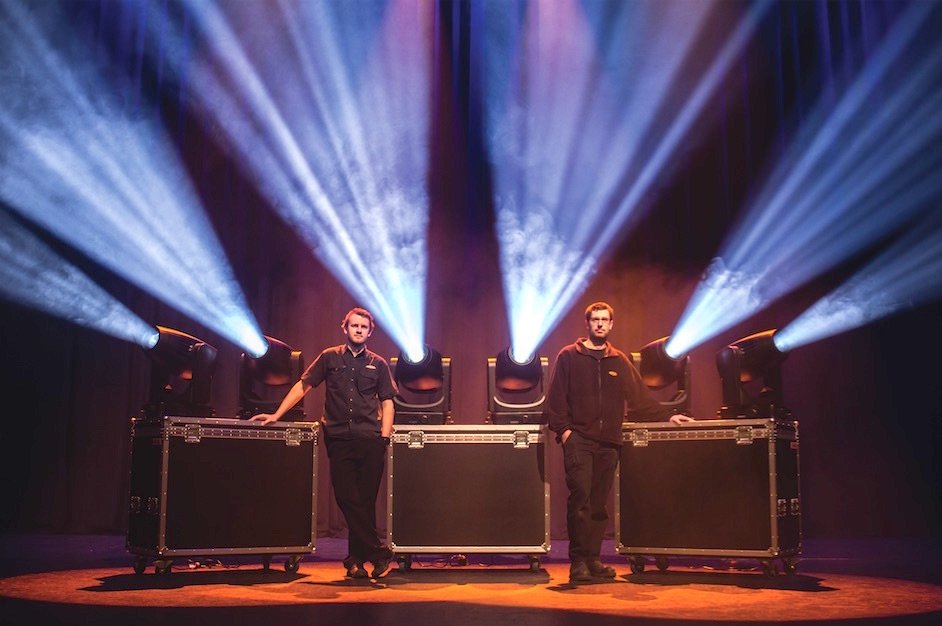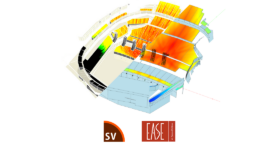News
7 Dec 2018
Road Test: Ayrton Ghibli Profile Fixture

Subscribe to CX E-News
Road Test
Ayrton Ghibli
by Ben Hunt, Head of Lighting, Empire Theatre Toowoomba.
Ben has been involved in the technical production world for over a decade. Preceding his appointment at The Empire Theatre, Ben worked as a freelance Lighting Designer for the Empire Theatre and other venues in SE Queensland, and has toured nationally. His work has seen him light an array of entertainment genres including rock & roll, theatre, musicals, film and television, dance works and corporate events.
The Empire Theatre in Toowoomba, Queensland, is a heritage listed building that was rebuilt in 1997, and expanded to include the new Armitage Centre in 2014. The Empire Theatre itself is a 1,600 seat proscenium arch theatre, while the Armitage Centre is a 350 seat black box with retractable seating. The complex also includes the renovated Empire Church Theatre, which is a church that was converted to a function venue, and a 100 seat studio space behind the main theatre.
Like most regional venues, we service a broad range of entertainment, community, and corporate clients.
Just over six months ago, the time had come to replace our existing profile fixtures. We were looking for something that offered superior light quality, and more output than we already had. It had to be versatile; we wanted a unit we could light a theatre piece with one day and do a corporate gig with the next. It also needed to be tour-friendly so we could offer it to touring bands to supplement their rig. It needed to be small enough to fit in a fly space, as we are a fly tower venue. In short, we wanted something that could be used to good effect in every field we work in.
We already had some LED moving fixtures, so it made sense to continue with the transition to LED. Framing shutters were also important for us to have. We evaluated most LED options and did on-site comparisons. The Ayrton Ghibli’s stood out because of their versatility, broad feature set, and flat-field optics.
Beam
Some fixtures have beams that have a hot centre and fade off at edge. The Ghibli’s is like a pancake – bright and flat, which is especially important in a framing shutter fixture, and means that gobo projections are crisp all the way to the edge of the beam.
The dimmer curve is also nice and linear all the way in and back out. Ayrton make a point of this in their marketing, and it really does what it says on the piece of paper.
Framing
The framing shutter system is very fast and accurate. They are full curtain and can carry the blade all the way through the optical path, meaning you can do a full curtain wipe with each blade. That allows for a lot of different options from a lighting design point of view, and you can open a beam up in a totally different way.
In terms of their accuracy, we’ve used them as key lights on lecterns, and on pieces of scenery with a 40-metre throw, and they’ve been bang on every time. There’s nothing worse than going into a preset and finding out that the framing job you spent all that time on is not reproduced accurately.
Zoom
The zoom goes out to 56 degrees wide, and the front lens is a massive 137mm, which means you can get really nice aerial effects. It has enough grunt to dial in a gobo, go full wide, and still get nice beams in the air. At the other end of the zoom range, 7 degrees is great when you’re throwing longer distances or need some punchy beams.
Gobos
The Ghibli comes with a pretty broad range of gobos on board. The first wheel is predominantly for aerial effects, and is a typical rock’n’roll gobo suite. The second wheel has a lot of break-up gobos that when coupled with framing and/or a light frost can help create texture and scenic elements, or build a space for a corporate event.
I think Ayrton were smart with their selection.
Prism and Frost
The prism is great; you can use it full wide, which gives you a massive amount of light out front, but you can still throw in small dots and get nice aerial effects in haze. There’s two frost filters – light and heavy. Light is great for dropping in front of sharp gobos, or over framing to soften. Heavy frost turns the Ghibli into a tight wash unit. The versatility of being able to turn the unit into a wash unit and have beam control is also advantageous.
Colour
The Ghibli has a CMY mixing system, variable CTO filter, and a fixed colour wheel. The colour output is rich and vibrant. Ayrton have put a high CRI filter in the first colour wheel slot, which is a clever move. When you put it in, it brings the fixture’s CRI up to 90 which is important for camera and skin tones, allowing you to have correct, natural colour representation of objects that are being lit.
Often with some units in the same category, you take a permanent cut in overall output to get better CRI, but the Ghibli gives you the flexibility to take the output cut when you need it, as it’s not always necessary.
Connectivity
In-house we run control from an MA Lighting grandMA2, and most of the time the Ghiblis are in a wired DMX stream. They are also fitted with LumenRadio wireless DMX, which we’ve found really useful for positioning in difficult spots where it’s hard to get data to.
On a couple of events, we’ve used them specifically because of the wireless DMX connectivity, as they can then send on the data to other devices through their wired DMX ports. We’ve found the LumenRadio connectivity to be robust and easy to use.
 Physical
Physical
Compared to some fixtures with similar specs, the Ghibli is smaller and lighter. They’re a comfortable two person lift, and we can get them into multiple locations with no problems, including our bridges and onto our balcony rail. It’s a sleek looking unit, and not too big or bulky, so they look the part if they are sitting around the room at a corporate gig.
In terms of noise, they are at an acceptable level for an audience member sitting below them when they’re rigged on the balcony rail. They do have a ‘Theatre/Studio’ low noise mode if you want to control unit noise down further. There is a little movement noise, but it is comparable to other units in the category.
Brand: Ayrton
Model: Ghibli
Product Info: ayrton.eu
Australia: showtech.com.au
New Zealand: showtech.com.au/homenz
Ayrton Ghibli – The Specs
Optics
Beam aperture: 7° to 56°
137 mm frontal lens
Light Source
36,000 lumens 8000 K white light engine
Total luminaire output: up to 23,000 lumens
Colour temperature output: 6500 K
CRI: greater than 70
Movement
Moving-head range: 540° (pan), 270° (tilt)
Colours
CMY colour mixing
Variable CTO colour temperature correction
Fixed colour wheel with seven complementary colours and High CRI filter
Gobos
Indexable rotating gobo wheels with 7 high-precision glass gobos, plus open position
Fixed gobo wheel with 8 high-precision glass gobos, plus open position
Gobo diameter: 30.0 mm
Image diameter: 22.0 mm
Framing system
4 individually positionable shutter blades on a 100% surface area in all positions
Rotation of the framing system module: +/- 45°
Iris diaphragm
Iris range: 15% to 100% open
Frost
2 frost filters: one light, one heavy
Effects
Graphic animation effect-wheel with continuous rotation in both directions
5-facet circular rotating and indexable prism
Sparkle effect: dynamic animation effect with speed and fade adjustment
Dimmer / Strobe
Electronic dimmer, allowing light adjustment from 0 to 100% without colour variation
Strobe effect, with speed adjustment from 1 to 25 flashes per second
Size
Product: 468 x 734 x 280 mm (l x h x d)
Flight-case foam: 655 x 590 x 555 mm (l x h x d)
Weight: 35.6 KG
Lead image: Shane Crewdson
From the December 2018 – January 2019 edition of CX Magazine. CX Magazine is Australia and New Zealand’s only publication dedicated to entertainment technology news and issues – available in print and online. Read all editions for free or search our archive www.cxnetwork.com.au
© CX Media
Subscribe
Published monthly since 1991, our famous AV industry magazine is free for download or pay for print. Subscribers also receive CX News, our free weekly email with the latest industry news and jobs.

















